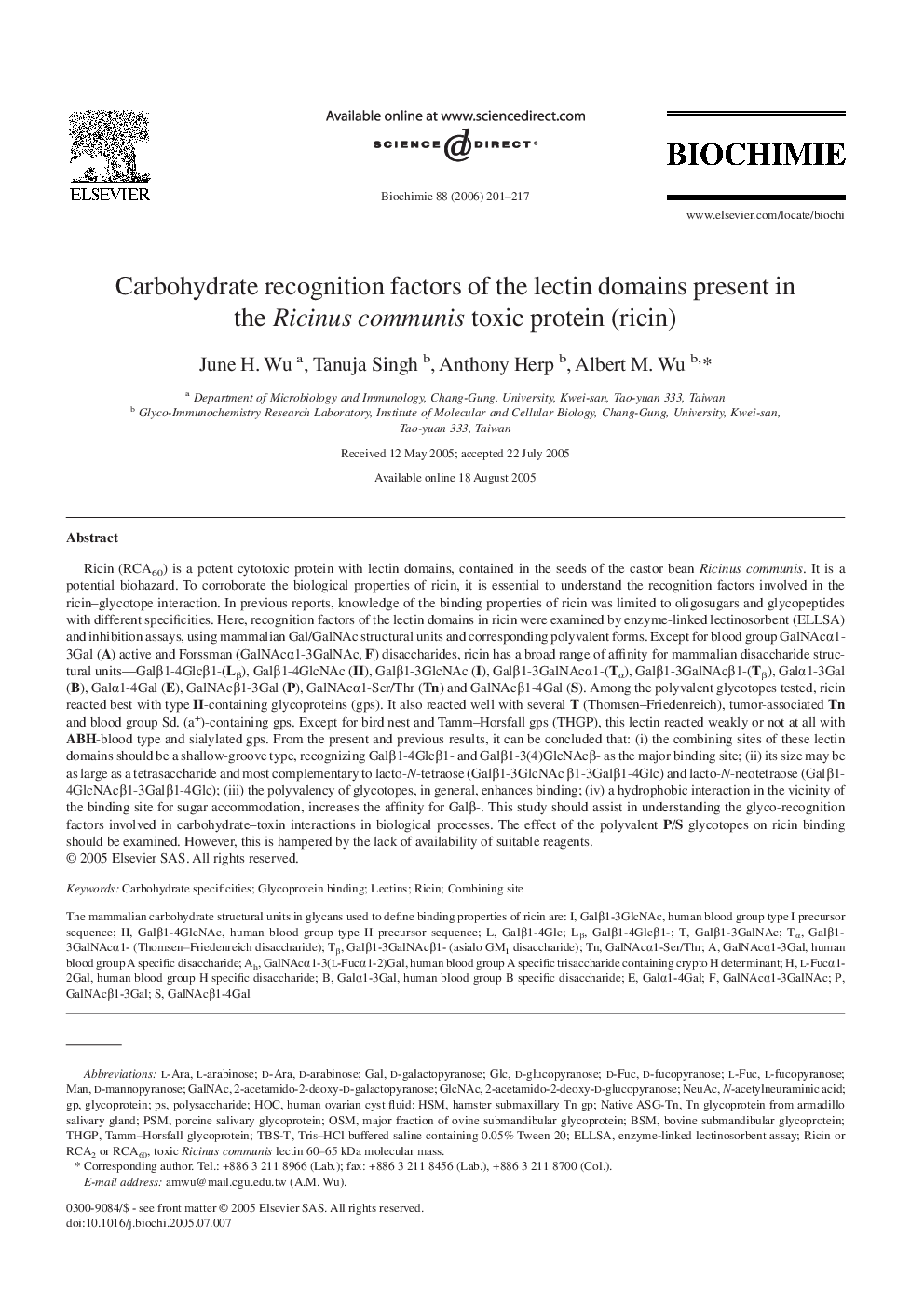| Article ID | Journal | Published Year | Pages | File Type |
|---|---|---|---|---|
| 1953406 | Biochimie | 2006 | 17 Pages |
Ricin (RCA60) is a potent cytotoxic protein with lectin domains, contained in the seeds of the castor bean Ricinus communis. It is a potential biohazard. To corroborate the biological properties of ricin, it is essential to understand the recognition factors involved in the ricin–glycotope interaction. In previous reports, knowledge of the binding properties of ricin was limited to oligosugars and glycopeptides with different specificities. Here, recognition factors of the lectin domains in ricin were examined by enzyme-linked lectinosorbent (ELLSA) and inhibition assays, using mammalian Gal/GalNAc structural units and corresponding polyvalent forms. Except for blood group GalNAcα1-3Gal (A) active and Forssman (GalNAcα1-3GalNAc, F) disaccharides, ricin has a broad range of affinity for mammalian disaccharide structural units—Galβ1-4Glcβ1-(Lβ), Galβ1-4GlcNAc (II), Galβ1-3GlcNAc (I), Galβ1-3GalNAcα1-(Tα), Galβ1-3GalNAcβ1-(Tβ), Galα1-3Gal (B), Galα1-4Gal (E), GalNAcβ1-3Gal (P), GalNAcα1-Ser/Thr (Tn) and GalNAcβ1-4Gal (S). Among the polyvalent glycotopes tested, ricin reacted best with type II-containing glycoproteins (gps). It also reacted well with several T (Thomsen–Friedenreich), tumor-associated Tn and blood group Sd. (a+)-containing gps. Except for bird nest and Tamm–Horsfall gps (THGP), this lectin reacted weakly or not at all with ABH-blood type and sialylated gps. From the present and previous results, it can be concluded that: (i) the combining sites of these lectin domains should be a shallow-groove type, recognizing Galβ1-4Glcβ1- and Galβ1-3(4)GlcNAcβ- as the major binding site; (ii) its size may be as large as a tetrasaccharide and most complementary to lacto-N-tetraose (Galβ1-3GlcNAc β1-3Galβ1-4Glc) and lacto-N-neotetraose (Galβ1-4GlcNAcβ1-3Galβ1-4Glc); (iii) the polyvalency of glycotopes, in general, enhances binding; (iv) a hydrophobic interaction in the vicinity of the binding site for sugar accommodation, increases the affinity for Galβ-. This study should assist in understanding the glyco-recognition factors involved in carbohydrate–toxin interactions in biological processes. The effect of the polyvalent P/S glycotopes on ricin binding should be examined. However, this is hampered by the lack of availability of suitable reagents.
